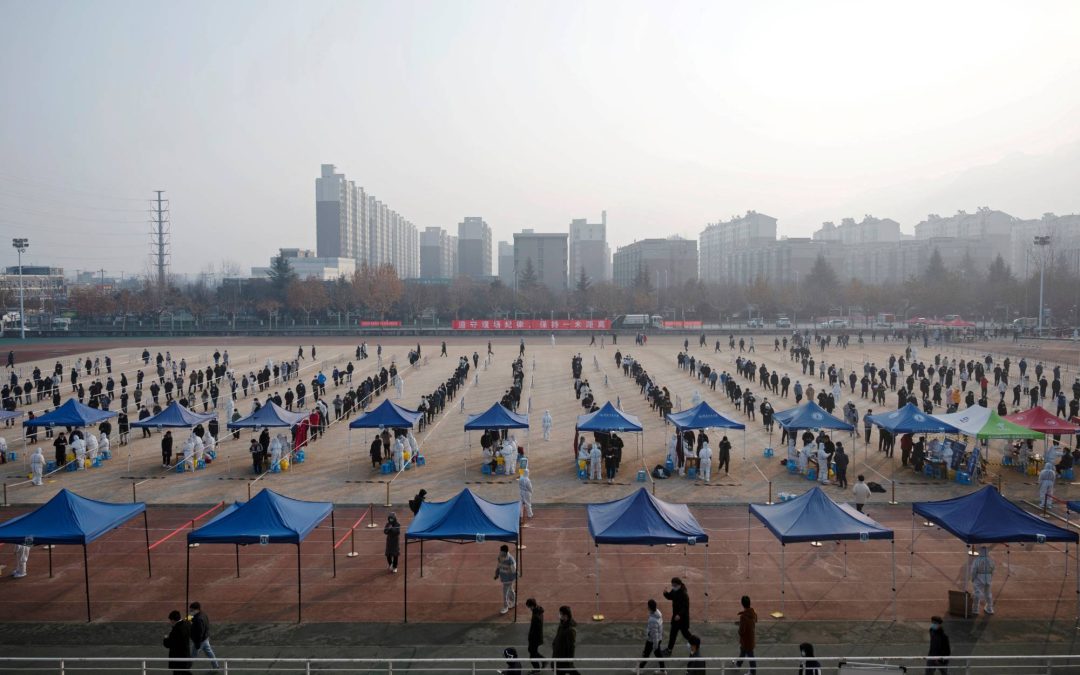How will Omicron affect the labour force of global supply chains?
For most of the epidemic, global supply chains have been congested, and system-wide labor shortages seem to be exacerbating the situation. Omicron, according to business executives and government health professionals, will have a growing influence on labor availability at all levels. Students will get sick, teachers will get sick, classes will close and parents will forced to work from home when possible or miss work when not. The domino effect of Omicron will have a massive impact on the entire global economy including supply chains.
Lars Jensen, CEO of liner consultant Vespucci Maritime, commented on LinkedIn about this issue: “With the new wave of Covid more people get tested positive. This means more people have to call in sick from work – and that of course goes for all kinds of jobs – including port workers, truck drivers, warehouse staff etc.”
US Port Congestion
On January 5, John Porcari, the White House Supply Chain Task Force’s port envoy, claimed that US ports are facing “some higher outages from longshore workers and others” that haven’t hampered operations thus far. However, on January 3, the United States reported more than a million new cases of Covid; at that pace of spread, ports and the players they deal with will undoubtedly begin to experience the impacts of the highly transmissible Omicron version.
Those consequences will not occur in isolation, of course. Labor shortages are also expected by manufacturers and shippers.
Canadian Productivity Reductions
This week, Dennis Darby, CEO of Canadian Manufacturers and Exporters, remarked, “Suddenly, people are calling in sick. If this persists, we’re actually going to see an effect on output.”
Stelco Holdings of Canada, for example, has already seen a reduction in production. The business supplied 50,000 tons of steel fewer than projected in Q4 2021, citing unforeseen interruptions due to omicron as the cause.
“It’s spreading like absolute wildfire and what we’re seeing its impacts all over the place including getting transportation [and] issues we have to deal with in the company with absent workers,” said Alan Kestenbaum, chief executive officer of Stelco.
“But the thing that’s gotten us and really provoked our announcement today is the lack of visibility we have with our customers, because many of our customers started reporting to us in the last few days of December that they simply don’t have work crews to produce parts.”
Michelle Wasylyshen, spokesperson for the Retail Council of Canada, said: “Omicron has resulted in more unplanned absences, not to mention complications from sudden government restrictions … [that] throw schedules that were often planned weeks in advance upside down.”
Officials from the Department of Health are also warning of serious consequences. Dr. Bonnie Henry, the provincial health officer in British Columbia, for example, informed businesses last week: “We need to anticipate that as many as a third of your workforce at any one time may become ill with Covid-19. We need to adapt businesses so we can operate at these reduced numbers.”
How will Omicron affect Chinese manufacturing?
A recent Omicron outbreak in China has forced retailers around the world into a borderline panic as they do their best to anticipate massive product shortages that could be greater than anything we saw in 2021 where China’s “covid-zero” policy helped manufacturers stay open as they produced the world’s goods at a record-breaking pace. That could all come to a very quick halt as confirmed cases rise and the likelihood of stiffer restrictions increases.
As China remains the world’s leader in manufacturing and in the event that there were significant shutdowns, it would have an extremely large impact on the global economy that could take years to recover. We’ve already seen shutdowns to clothing factories and delays for gas deliveries at the Ningbo Seaport along with huge disruptions to computer chip manufacturing that has delayed the sale of hundreds of thousands of vehicles as the city of Xi’an entered a full lockdown. Our guess is that this will only get worse but if there was a saving grace, it could be that China is celebrating their Lunar New Year a full two weeks earlier this year. This means that the vast majority of Chinese businesses, schools and ports will be shut down or operating at a heavily reduced capacity during what could be the biggest wave of Covid the planet has seen and that could theoretically be good for preventing the spread of Omicron. Port productivity decreases may be partially mitigated by manufacturing and shipping slowdowns. While this would be awful for the economy in the short term, it may be a good way to keep the spread under control.
How can I prepare for Covid closures as a business?
We expect that as Chinese ports close or operate at a reduced capacity, this will once again drive up the price of shipping to record levels well above what we saw last year. If you are a North America-based business sitting on inventory in China, get it moved as quickly as possible. First, we will see congestions at the Chinese ports and then once things open back up in Asian markets, we will see a tidal wave of congestion at US and Canadian ports. It’s barely January and businesses should already be coming up with plans on how they can save Christmas of 2022.

